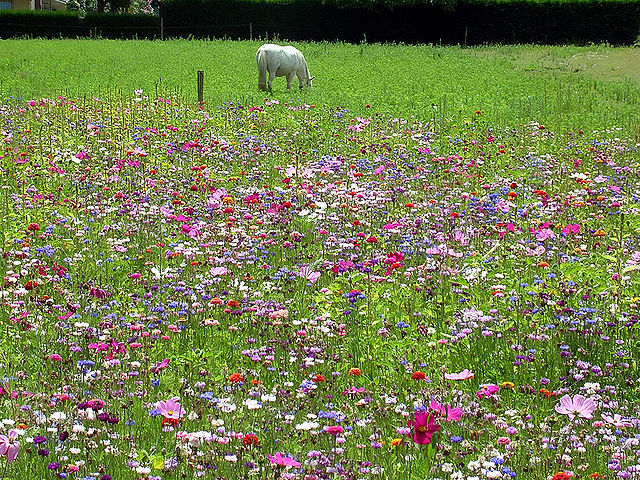Who has never dream of creating a floral fallow in his garden? You do not need a vast expanse, only a small well-lit plot will suffice to create a tapestry of flowers that will attract pollinators and will allow to create flower arrangements over the whole season.
It is important not to confuse floral fallow and flowering meadow. On the one hand, a floral fallow is made of a mix of annual flowers that are sown in spring – or in autumn in warmer region – after the soil has been ploughed. This is only with this human intervention that these plants will be able to occupy this space from one year to another. On the other hand, a flowering meadow is a mix of perennial plants that should be mown twice a year. It is true that certain seed mix for flowering meadow contains annual plants, to increase their interest in their first year after sowing. This creates certain confusion. In that case, the annuals will recede and slowly be replaced by perennials.
A lot of plants that typically form a floral fallow, such as Agrostemma githago or Centaurea cyanus, were previously found in fields. They have disappeared almost completely due to the massive use of herbicides. Hence, a floral fallow creates a certain biodiversity.
Nowadays, ready-made seed mixes are easily found. I personally prefer to experiment with my own mix and create every year a new composition. This year I plan to create a floral fallow with blue flowers and a couple of orange ones as contrasting elements. I always start with a base of green manure, this year, flax – that flowers 6 weeks after sowing – and summer oat, whose roots deeply penetrate the soil and aerate it. I am also adding classics, like nigellas and calendulas, as well as a couple of exotics for their originality, such as Tithonia rotundifolia ‘Torch’ and Californian poppies. A good way to complement any mix is to add a couple of officinal umbellifers, such as dill, coriander or fennel.
After having forked and raked the soil, I sow the mix in April in lines. The later will quickly disappear after couple of weeks. This has the advantage of making weeding easier. Most of the success of a floral fallow depends on this early intervention. The difficulty is to distinguish at an early development stage plants from the mix from the undesirable ones. Moreover, it is important not to sow too thickly; plants will develop better if they are not in direction competition with their immediate neighbors.


Recent Comments